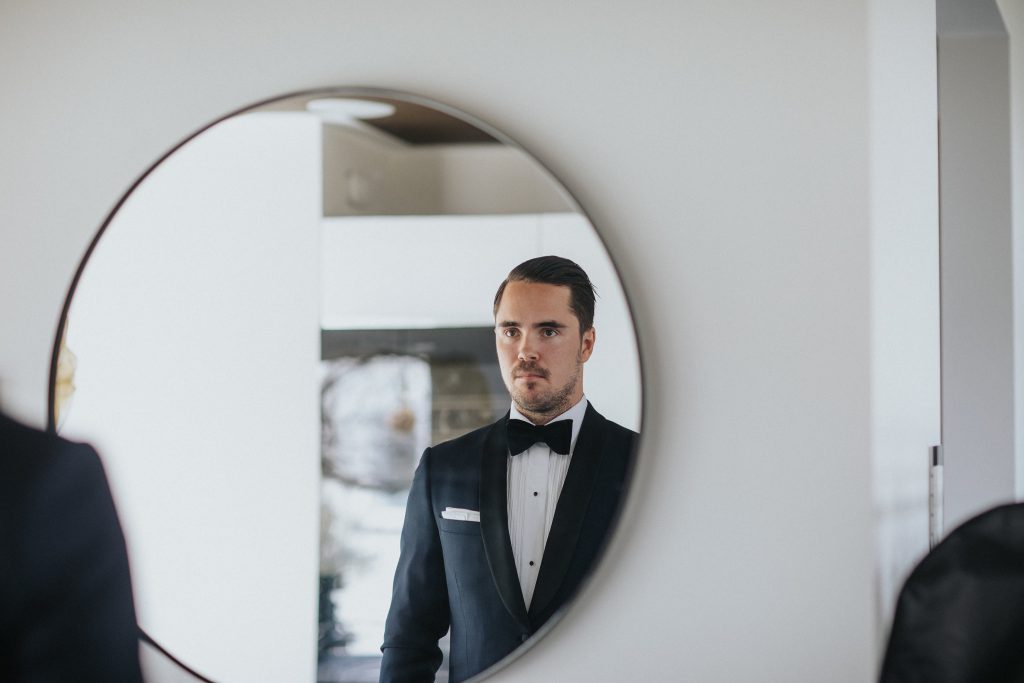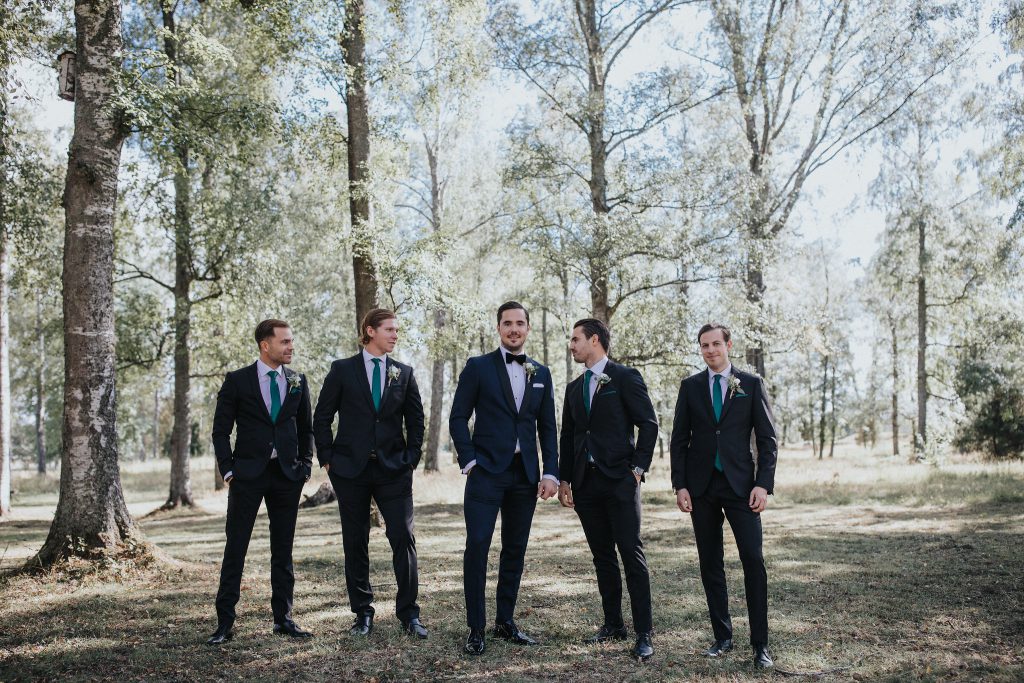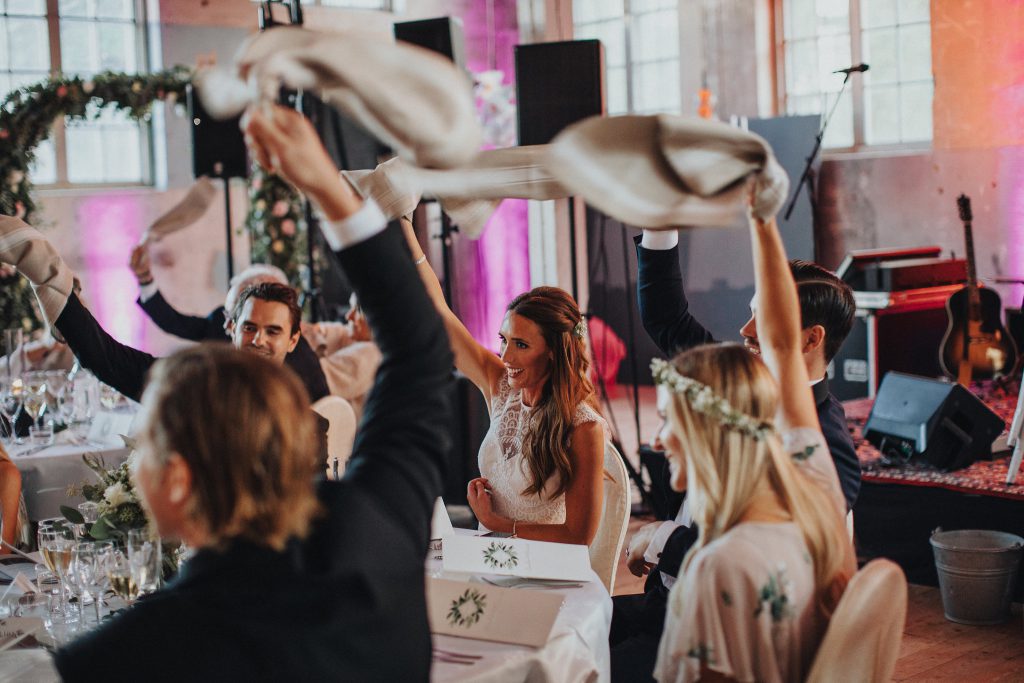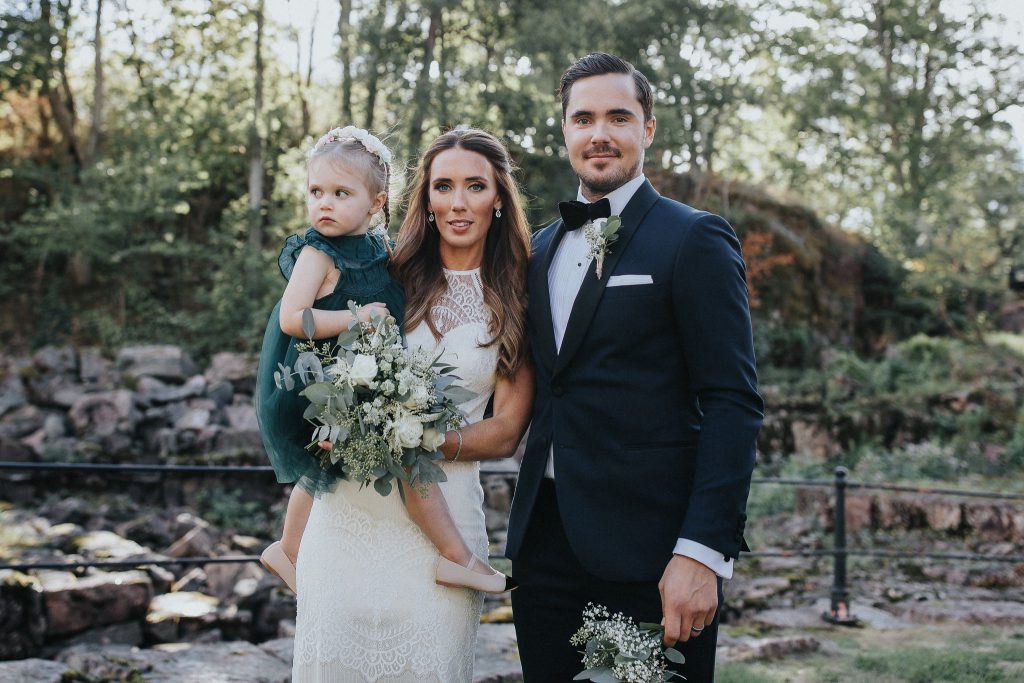Historically, in most cultures, married women had very few rights of their own, being considered, along with the family’s children, the property of the husband; as such, they could not own or inherit property, or represent themselves legally (see for example coverture). In Europe, the United States, and other places in the developed world, beginning in the late 19th century and lasting through the 21st century, marriage has undergone gradual legal changes, aimed at improving the rights of the wife.
These changes included giving wives legal identities of their own, abolishing the right of husbands to physically discipline their wives, giving wives property rights, liberalizing divorce laws, providing wives with reproductive rights of their own, and requiring a wife’s consent when sexual relations occur. These changes have occurred primarily in Western countries. In the 21st century, there continue to be controversies regarding the legal status of married women, legal acceptance of or leniency towards violence within marriage (especially sexual violence), traditional marriage customs such as dowry and bride price, forced marriage, marriageable age, and criminalization of consensual behaviors such as premarital and extramarital sex.
Individuals may marry for several reasons, including legal, social, libidinal, emotional, financial, spiritual, and religious purposes. Whom they marry may be influenced by socially determined rules of incest, prescriptive marriage rules, parental choice and individual desire. In some areas of the world, arranged marriage, child marriage, polygamy, and sometimes forced marriage, may be practiced as a cultural tradition. Conversely, such practices may be outlawed and penalized in parts of the world out of concerns for women’s rights and because of international law.In developed parts of the world, there has been a general trend towards ensuring equal rights within marriage for women and legally recognizing the marriages of interfaith or interracial, and same-sex couples. These trends coincide with the broader human rights movement.
Marriage can be recognized by a state, an organization, a religious authority, a tribal group, a local community or peers. It is often viewed as a contract. Civil marriage, which does not exist in some countries, is marriage without religious content carried out by a government institution in accordance with the marriage laws of the jurisdiction, and recognised as creating the rights and obligations intrinsic to matrimony. Marriages can be performed in a secular civil ceremony or in a religious setting via a wedding ceremony.
Since the late twentieth century, major social changes in Western countries have led to changes in the demographics of marriage, with the age of first marriage increasing, fewer people marrying, and more couples choosing to cohabit rather than marry. For example, the number of marriages in Europe decreased by 30% from 1975 to 2005.
In many countries today, each marriage partner has the choice of keeping his or her property separate or combining properties. In the latter case, called community property, when the marriage ends by divorce each owns half. In lieu of a will or trust, property owned by the deceased generally is inherited by the surviving spouse.
In some legal systems, the partners in a marriage are ”jointly liable” for the debts of the marriage. This has a basis in a traditional legal notion called the ”Doctrine of Necessities” whereby a husband was responsible to provide necessary things for his wife. Where this is the case, one partner may be sued to collect a debt for which they did not expressly contract. Critics of this practice note that debt collection agencies can abuse this by claiming an unreasonably wide range of debts to be expenses of the marriage. The cost of defense and the burden of proof is then placed on the non-contracting party to prove that the expense is not a debt of the family. The respective maintenance obligations, both during and eventually after a marriage, are regulated in most jurisdictions; alimony is one such method.
Marriage is an institution that is historically filled with restrictions. From age, to race, to social status, to consanguinity, to gender, restrictions are placed on marriage by society for reasons of benefiting the children, passing on healthy genes, maintaining cultural values, or because of prejudice and fear. Almost all cultures that recognize marriage also recognize adultery as a violation of the terms of marriage.
In a wide array of lineage-based societies with a classificatory kinship system, potential spouses are sought from a specific class of relative as determined by a prescriptive marriage rule. This rule may be expressed by anthropologists using a ”descriptive” kinship term, such as a ”man’s mother’s brother’s daughter” (also known as a ”cross-cousin”). Such descriptive rules mask the participant’s perspective: a man should marry a woman from his mother’s lineage. Within the society’s kinship terminology, such relatives are usually indicated by a specific term which sets them apart as potentially marriageable. Pierre Bourdieu notes, however, that very few marriages ever follow the rule, and that when they do so, it is for ”practical kinship” reasons such as the preservation of family property, rather than the ”official kinship” ideology.
In a wide array of lineage-based societies with a classificatory kinship system, potential spouses are sought from a specific class of relative as determined by a prescriptive marriage rule. This rule may be expressed by anthropologists using a ”descriptive” kinship term, such as a ”man’s mother’s brother’s daughter” (also known as a ”cross-cousin”). Such descriptive rules mask the participant’s perspective: a man should marry a woman from his mother’s lineage. Within the society’s kinship terminology, such relatives are usually indicated by a specific term which sets them apart as potentially marriageable. Pierre Bourdieu notes, however, that very few marriages ever follow the rule, and that when they do so, it is for ”practical kinship” reasons such as the preservation of family property, rather than the ”official kinship” ideology.
A forced marriage is a marriage in which one or both of the parties is married against their will. Forced marriages continue to be practiced in parts of the world, especially in South Asia and Africa. The line between forced marriage and consensual marriage may become blurred, because the social norms of these cultures dictate that one should never oppose the desire of one’s parents/relatives in regard to the choice of a spouse; in such cultures it is not necessary for violence, threats, intimidation etc. to occur, the person simply ”consents” to the marriage even if he/she doesn’t want it, out of the implied social pressure and duty. The customs of bride price and dowry, that exist in parts of the world, can lead to buying and selling people into marriage.
In some societies, ranging from Central Asia to the Caucasus to Africa, the custom of bride kidnapping still exists, in which a woman is captured by a man and his friends. Sometimes this covers an elopement, but sometimes it depends on sexual violence. In previous times, raptio was a larger-scale version of this, with groups of women captured by groups of men, sometimes in war; the most famous example is The Rape of the Sabine Women, which provided the first citizens of Rome with their wives.
Other marriage partners are more or less imposed on an individual. For example, widow inheritance provides a widow with another man from her late husband’s brothers.
In rural areas of India, child marriage is practiced, with parents often arranging the wedding, sometimes even before the child is born. This practice was made illegal under the Child Marriage Restraint Act of 1929.
In the Jewish tradition, the rabbis in ancient times insisted on the marriage couple entering into a prenuptial agreement, called a ketubah. Besides other things, the ketubah provided for an amount to be paid by the husband in the event of a divorce or his estate in the event of his death. This amount was a replacement of the biblical dower or bride price, which was payable at the time of the marriage by the groom to the father of the bride.This innovation was put in place because the biblical bride price created a major social problem: many young prospective husbands could not raise the bride price at the time when they would normally be expected to marry. So, to enable these young men to marry, the rabbis, in effect, delayed the time that the amount would be payable, when they would be more likely to have the sum. It may also be noted that both the dower and the ketubah amounts served the same purpose: the protection for the wife should her support cease, either by death or divorce.
The only difference between the two systems was the timing of the payment. It is the predecessor to the wife’s present-day entitlement to maintenance in the event of the breakup of marriage, and family maintenance in the event of the husband not providing adequately for the wife in his will. Another function performed by the ketubah amount was to provide a disincentive for the husband contemplating divorcing his wife: he would need to have the amount to be able to pay to the wife.
Morning gifts, which might also be arranged by the bride’s father rather than the bride, are given to the bride herself; the name derives from the Germanic tribal custom of giving them the morning after the wedding night. She might have control of this morning gift during the lifetime of her husband, but is entitled to it when widowed. If the amount of her inheritance is settled by law rather than agreement, it may be called dower. Depending on legal systems and the exact arrangement, she may not be entitled to dispose of it after her death, and may lose the property if she remarries. Morning gifts were preserved for centuries in morganatic marriage, a union where the wife’s inferior social status was held to prohibit her children from inheriting a noble’s titles or estates. In this case, the morning gift would support the wife and children. Another legal provision for widowhood was jointure, in which property, often land, would be held in joint tenancy, so that it would automatically go to the widow on her husband’s death.
Islamic tradition has similar practices. A ’mahr’, either immediate or deferred, is the woman’s portion of the groom’s wealth (divorce) or estate (death). These amounts are usually set on the basis of the groom’s own and family wealth and incomes, but in some parts these are set very high so as to provide a disincentive for the groom exercising the divorce, or the husband’s family ’inheriting’ a large portion of the estate, especially if there are no male offspring from the marriage. In some countries, including Iran, the mahr or alimony can amount to more than a man can ever hope to earn, sometimes up to US$1,000,000 (4000 official Iranian gold coins). If the husband cannot pay the mahr, either in case of a divorce or on demand, according to the current laws in Iran, he will have to pay it by installments. Failure to pay the mahr might even lead to imprisonment.
In a wide array of lineage-based societies with a classificatory kinship system, potential spouses are sought from a specific class of relative as determined by a prescriptive marriage rule. This rule may be expressed by anthropologists using a ”descriptive” kinship term, such as a ”man’s mother’s brother’s daughter” (also known as a ”cross-cousin”). Such descriptive rules mask the participant’s perspective: a man should marry a woman from his mother’s lineage. Within the society’s kinship terminology, such relatives are usually indicated by a specific term which sets them apart as potentially marriageable.
Pierre Bourdieu notes, however, that very few marriages ever follow the rule, and that when they do so, it is for ”practical kinship” reasons such as the preservation of family property, rather than the ”official kinship” ideology.In a wide array of lineage-based societies with a classificatory kinship system, potential spouses are sought from a specific class of relative as determined by a prescriptive marriage rule. This rule may be expressed by anthropologists using a ”descriptive” kinship term, such as a ”man’s mother’s brother’s daughter” (also known as a ”cross-cousin”).
Such descriptive rules mask the participant’s perspective: a man should marry a woman from his mother’s lineage. Within the society’s kinship terminology, such relatives are usually indicated by a specific term which sets them apart as potentially marriageable. Pierre Bourdieu notes, however, that very few marriages ever follow the rule, and that when they do so, it is for ”practical kinship” reasons such as the preservation of family property, rather than the ”official kinship” ideology.
Some people want to marry a person with higher or lower status than them. Others want to marry people who have similar status. In many societies women marry men who are of higher social status.There are marriages where each party has sought a partner of similar status. There are other marriages in which the man is older than the woman.
Societies have often placed restrictions on marriage to relatives, though the degree of prohibited relationship varies widely. Marriages between parents and children, or between full siblings, with few exceptions, have been considered incest and forbidden. However, marriages between more distant relatives have been much more common, with one estimate being that 80% of all marriages in history have been between second cousins or closer. This proportion has fallen dramatically, but still more than 10% of all marriages are believed to be between first and second cousins. In the United States, such marriages are now highly stigmatized, and laws ban most or all first-cousin marriage in 30 states. Specifics vary: in South Korea, historically it was illegal to marry someone with the same last name and same ancestral line.
In various societies the choice of partner is often limited to suitable persons from specific social groups. In some societies the rule is that a partner is selected from an individual’s own social group – endogamy, this is often the case in class and caste based societies. But in other societies a partner must be chosen from a different group than one’s own – exogamy, this may be the case in societies practicing totemic religion where society is divided into several exogamous totemic clans, such as most Aboriginal Australian societies.
In other societies a person is expected to marry their cross-cousin, a woman must marry her father’s sister’s son and a man must marry his mother’s brother’s daughter – this is often the case if either a society has a rule of tracing kinship exclusively through patrilineal or matrilineal descent groups as among the Akan people of West Africa. Another kind of marriage selection is the levirate marriage in which widows are obligated to marry their husband’s brother, mostly found in societies where kinship is based on endogamous clan groups.

























































